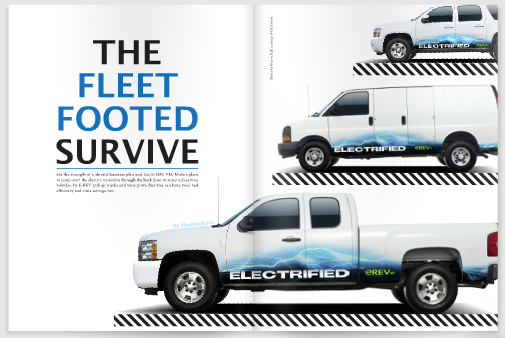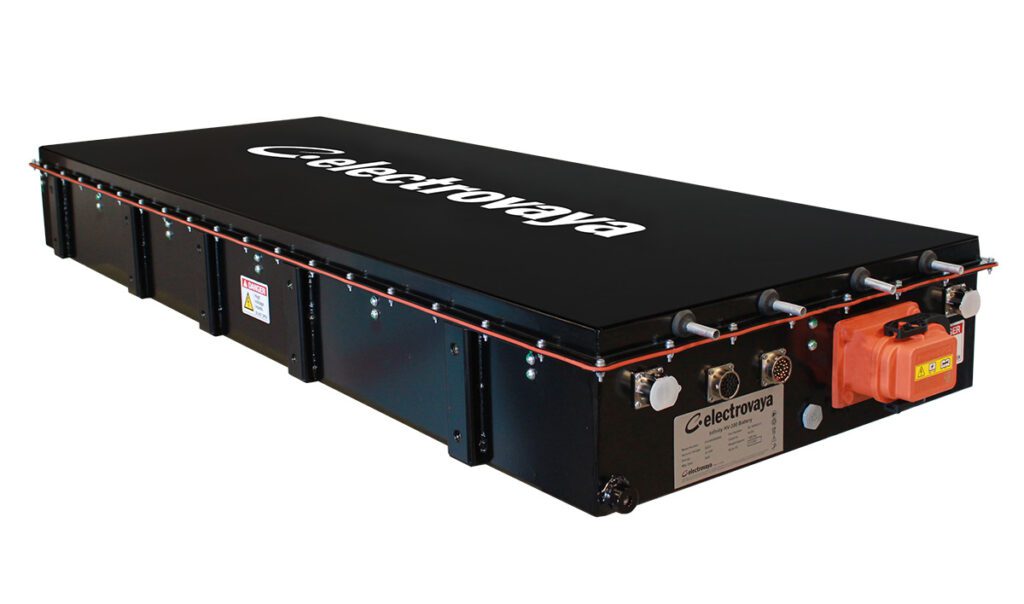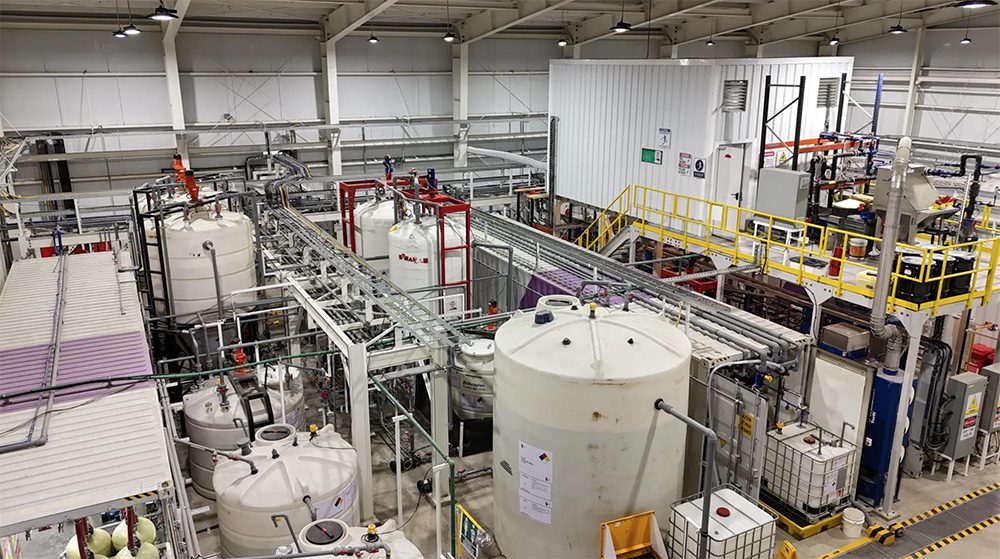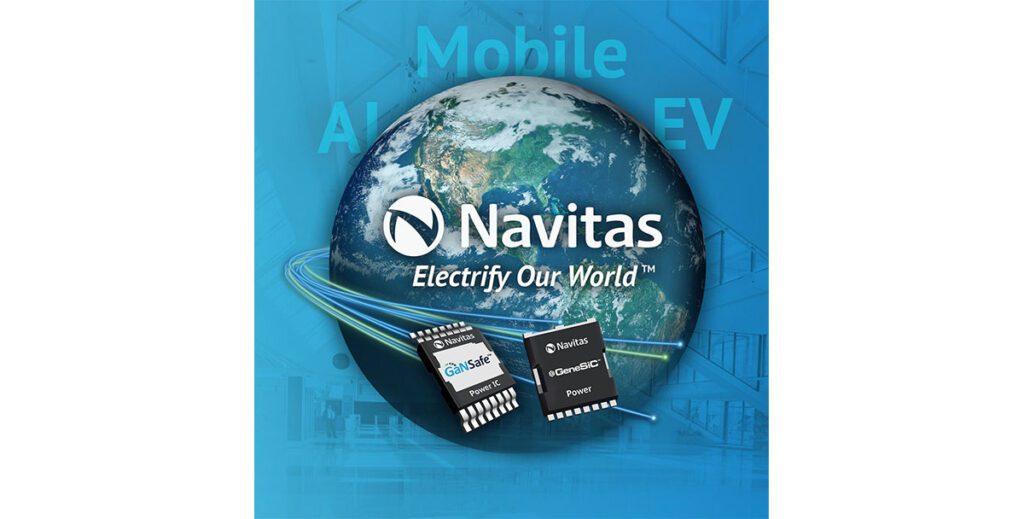On the strength of a shrewd business plan and ties to GM, VIA Motors plans to jump-start the electric transition through the back door of America’s service vehicles. Its E-REV pickup trucks and vans prove that you can have your fuel efficiency and costs savings, too.
Everyone should want an EV. They’re more efficient than combustion engine cars, potentially much better for the environment, and they can contribute to national energy independence. Right? Right – if only they actually cost less in the long run – even after fuel savings and tax credits – and if only there were fast charging stations wherever gas was sold, more people might actually be buying.
However, charging stations won’t come without the cars on the street, and the cars won’t sell until they’re cheaper than the cost of conventional cars plus gas, which won’t happen until batteries cost less and are more efficient. And that will take years (see the Envia Systems feature).
The crafty industry veterans who work at VIA Motors know the stated EV quandary all too well, but have worked since the company’s inception in 2010 on a plan to bridge the current early adopter stage of the consumer EV transition with the era of charging stations – a sure sign of mainstream acceptance.
ELECTRIC CONVERSION
Early this year at the Detroit Auto Show, VIA debuted its line of extended range electric vehicles, which it shortens to the name E-REVs. Available as pickup trucks, vans and SUVs, the E-REVs can electrify well-known chassis such as the Chevy Silverado, Ford F-Series, or Dodge Ram series that are built with VIA’s E-REV Powertrain. Similar to the Chevrolet Volt, the E-REV Powertrain plug-in hybrid system features batteries and an electric motor, with a gas engine that operates only to generate electricity. They’re also the first plug-in hybrid vehicles of their kind with the power and performance of a V8 engine.

VIA Motors’ E-REV Powertrain plug-in hybrid line up.
Vehicle images courtesy of VIA Motors.
By focusing on light truck frames, VIA aims to make EVs much more cost effective. They are replacing the least fuel-efficient gas vehicles, rather than sedans with decent fuel efficiency – which the Volt and LEAF compete with. And for at least the first two years, VIA will focus on selling to fleets, whose regular service calls will often fall within the E-REV’s up-to-40-mile all-electric range. In fact, the Federal Highway Administration’s 2011 national average for miles driven per day was 36.9 (45.3 for males). If the gas power is needed, an E-REV’s combined range can stretch to as far as 400 miles.
 When driving 50 miles a day, an E-REV pickup truck’s fuel efficiency would average about 100 mpg. Even at 60 miles per day, the fuel economy measures 60 mpg, far more than the common 14 to 22 mpg of popular gasoline pickup trucks. The E-REV’s onboard generator for electrical power export places the cherry on top for fleet use.
When driving 50 miles a day, an E-REV pickup truck’s fuel efficiency would average about 100 mpg. Even at 60 miles per day, the fuel economy measures 60 mpg, far more than the common 14 to 22 mpg of popular gasoline pickup trucks. The E-REV’s onboard generator for electrical power export places the cherry on top for fleet use.
“The fleet market runs the numbers – they don’t operate on emotion,” said Bob Lutz, a member of VIA Motors’ board of directors. “When they run the numbers on this truck, it’s a compelling case. You don’t have to convince anybody. VIA is going to be able to sell every one of these that they make. The VIA solution makes so much sense, because you’re taking the fuel out of the equation in the vehicles that use a ton of it.”
VIA’S VALUE
In VIA’s early days, Chief Operating Officer and long-time General Motors executive Alan Perriton enlisted former GM Vice Chairman Lutz as a kind of liaison between VIA and GM. Later, when CEO Kraig Higginson asked Lutz to become a VIA board member, Lutz said, “I was very enthusiastic, because this is a serious program. It’s not one of these marginal electric startups that get a lot of government money, blow through it, and then fold because they don’t have a really good proposition.”
That proposition will have real-world data backing it this year, in part thanks to VIA’s beta-testing partnership with California energy utility Pacific Gas & Electric (PG&E), which was announced in March. PG&E had been using E-REV alpha units for about a year, and will use E-REV VTRUX pickup beta units throughout 2012, delivering feedback to VIA on the trucks’ reliability, maintenance requirements, mileage, external generator performance, etc.

PG&E and VIA Motors. From left to right: Alan Perriton – VIA Motors Chief Operations Officer, David Meisel – PG&E Director of Transportation, Bob Lutz – General Motors Former Vice-Chairman, Greg Pruett – PG&E Sr. Vice President, Kraig Higginson – VIA Motors Chief Executive Officer
Photo by Noah Berger
According to PG&E Senior Vice President Greg Pruett, the utility has about 3,500 vehicles of this type in its fleet, and could begin replacing them with 400 to 500 E-REVs a year when the full production units become available in Q4 2012 or Q1 2013.
That’s a sizable investment with the initial pricing of an E-REV truck at $79,000. Perriton said that price should drop to $69,000 in 12 months and $64,000 sometime after. Neither does that include government incentives, which can total $20,000 depending on the state. “Using those numbers, the total lifecycle cost of that vehicle comes out very nicely,” Perriton said. Also, fleet purchases of 50 units or more are eligible for an undisclosed discount.
Individual customers may reserve an E-REV with a $1,000 deposit, but there won’t be individual deliveries until sometime next year.
Whatever price PG&E paid for its E-REVs so far, Pruett pointed to a $2,700 savings in fuel cost per truck, per year over conventional pickup trucks, as well as less required maintenance than gas pickups.
Anyone can have a look at the figures on VIA’s Life Cycle Savings Calculator at Viamotors.com. It lets you adjust for cost of gas, drive miles per year, electricity costs and other factors for an eight-year life cycle of the truck. “The case is compelling, especially for the big utility companies,” Lutz said, “because they’ve got their own cost on electricity… that’s not retail.”
MAKING A DIFFERENCE
Pruett added that the E-REV’s exportable power was a big determining factor for PG&E. Their power modules have 120 and 240 V outlets, as well as other connections built-in, and can accommodate heavy power tools. Current E-REVs have a 15 kW generator at 30 amps, and a utility grade module is in development that will offer 50 kW of mobile power.

VTRUX Power Export – up to 15 kW, 110 & 220 VAC 60 Hz
“We’d like to see that number in the 100 kW range,” Pruett said. “If we had 100 kW, that changes the way we would potentially respond to things at the utility. These trucks have the potential to make planned service interruptions about as common as a pay phone is today.”
Such possibilities have also attracted Verizon to ink a deal with VIA to test and develop E-REV pickup trucks and vans for possible wide-scale adoption into Verizon’s work fleet. Coca-Cola has also expressed interest in the vans. Verizon, for one, plans to make liberal use of the E-REV’s onboard generators.
“Utilities going to a remote location to work no longer have to drag that generator trailer with them,” Lutz said. “And it’s extremely attractive for the utilities to have a truck that fulfills all the environmental requirements, which is obviously good PR for any company.”
While the non-tree-hugging Lutz may see environmental friendliness as a PR ploy first, VIA at large is not shying away from the environmental message. “We’ve got 200 to 300 million vehicles running on the road in America, and we’re generating another 14 or so million a year,” Perriton said. “We’re consuming an enormous amount of fossil fuels.”
 However, he called the E-REV a game-changer. “It will have a ripple effect through the industry, and start us on the road to energy independence,” Perriton said. “Electrifying one truck is like taking two small cars off the road.”
However, he called the E-REV a game-changer. “It will have a ripple effect through the industry, and start us on the road to energy independence,” Perriton said. “Electrifying one truck is like taking two small cars off the road.”
At that rate, VIA is planning to displace the emissions of many thousands of small cars by 2013. While VIA is taking individual customer waiting list orders now, the bulk of its efforts will go towards courting fleets for at least the next two years. As it moves into manufacturing full-production units by late 2012 to early 2013, the small private company will ramp up production to 20,000 units a year over the next few years. Perriton said he expects VIA to be profitable within the first full quarter of production and sales.
Early profitability and a product that’s almost all upside and in high demand? That sounds too good to be true. But perhaps the strategy of developing a light-duty electric powertrain to build into existing vehicles and sell to work fleets hungry for fuel savings really will be the secret sauce that cleans up America’s service vehicles and leads the way for EV support infrastructure.
VIA will not stop there either. Details were sparse, but at VIA and PG&E’s joint announcement, plans were revealed to develop a Class 6 truck (on par with a Ford F-650) with the same E-REV propulsion system. Maybe Mel Gibson had it wrong. Tomorrow’s Road Warriors will be battling not over gasoline, but battery packs.
Issue: APR/MAY 2012



















































































